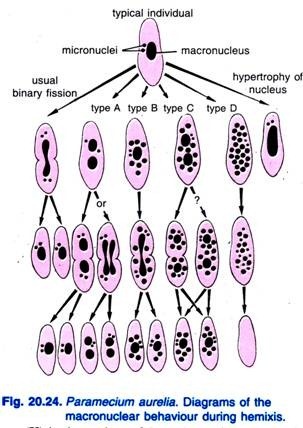ADVERTISEMENTS:
The following points highlight the three main factors influencing the life cycle of silkworm. The factors are: 1. Extraction of Silk 2. Composition of Silk 3. Modern Sericulture.
Factor # 1. Extraction of Silk:
The continuous silken thread which builds the cocoon serves as the source of the silk of our requirement. As the adult emerges from the pupa, the continuity of this thread is torn. For this reason, a few selected cocoons are retained to serve as ‘seed’ to maintain the population and the rest is destroyed for the extraction of the silk.
Usually the male cocoons are selected from their sex-linked skin markings for getting more silks. For the purpose of extraction, the cocoons which are ten days old are immersed in hot water. Such treatment kills the inner pupa. The killing is also done by steaming or dry heat or fumigation.
ADVERTISEMENTS:
The killing is followed by assortment of cocoons on the basis of their colour and texture. The treatment of heat for killing also removes the binding material or gums of the silk fibres. Then the thread is skilfully unreeled.
Threads drawn from several cocoons form the raw silk. Such silk is then treated variously to make it ready for spinning. Nearly 25,000 cocoons are required to get a pound of silk and the annual production of silk throughout the world is nearly 50 million pounds.
Factor # 2. Composition of Silk:
Silk is the secretory product of silk gland. The silk thread is composed of proteins. It has an inner core of fibroin (C30H46N10O12) and an outer enveloping layer of sericin (C30H40N10O16).
The silk is secreted as a liquid which becomes hard immediately upon being extruded. The colour of sericin corresponds with that of the blood, whereas the fibroin is always white. The silk thread consists of 75-80% of fibroin and 20-25% of sericin.
Factor # 3. Modern Sericulture:
ADVERTISEMENTS:
There are certain measures which are followed to improve the cultivation of silk worm to obtain good quality silk:
(i) Cultivation of food plants for silk moth larvae (a) plantation, (b) regular prunning.
(ii) Maintaining of proper stock of silk moth.
(iii) Rearing of eggs, larvae and cocoons.
(iv) Precaution against diseases attacking at different stages of life cycle.
(v) Extraction of silk.
(vi) Economy involved in this industry.
Sericulture can be grouped in two major heads:
(i) Mulberry silk culture:
ADVERTISEMENTS:
Pure silk.
The larvae of mulberry silk moth which consume the leaves of mulberry plants and transform into cocoons and the best quality of silk (pure silk) is obtained from these cocoons and their culture is known as mulberry silk culture.
(ii) Non-mulberry silk culture:
Endi, Muga, Tussar, etc.
ADVERTISEMENTS:
Problems of Sericulture:
Silk industry requires silk as well as new generation of worms. It involves in one hand modern techniques for extracting and processing silk and on the other hand better methods for rearing silk moths.
In countries like Japan and Italy significant researches have been carried out to improve the genetic qualities of the silkworm for yielding better silk at a low cost. This profitable industry is often menaced by various diseases resulted from the infections of virus, fungus, bacteria and protozoa. The table 18.4—Arthropoda shows the particulars of some common diseases and their remedies.


